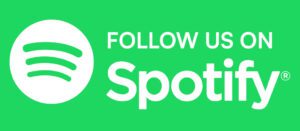
If you don’t have time to read the full post, check out the audio version on our Spotify channel.
In today’s fast-moving digital landscape, reaching your audience means more than just sending a newsletter or posting on social media. People consume information in different ways, depending on their preferences, habits, and even the time of day. That’s why at dotparc, we don’t rely on just one channel to share our ideas—we communicate through multiple formats. And the best part? These same strategies can help you connect with your clients and users, too.
Our Communication Toolbox
To make our messages clear, engaging, and accessible, we use a variety of content formats:
BLOG POSTS
Social Media Posts
White Paper (PDF Download)
AI-Generated Video Shorts
Podcasts
AI-Powered Personalized Chat Avatar (Beta)
Why Multiple Formats?
Using multiple content formats allows us to reach a broader audience by adapting to different preferences. It helps us connect with people on their preferred platforms, cater to various learning styles, and increase the chances that our message will be remembered and acted upon.
What This Means for You
Whether you’re launching a product, educating clients, or building brand trust, consider how your message could travel farther and deeper through different formats. For example:

How to Choose the Right Format
Start by asking these questions:
Final Thoughts
At dotparc, we see communication like architecture—strategic, structured, and built for impact. By using multiple formats, we make sure our message resonates. And you can do the same.
If you’re curious about how to start, or how we can help bring your content to life—from blogs to bots—get in touch. Let’s design a smarter way to communicate—together.
Ready to elevate your communication strategy?
Book a free discovery session with our team today and let’s explore how multi-format content can help your business connect, engage, and grow.


priligy walgreens 5 solution with epinephrine, 20 mL intra pleurally or systemic opioids prior to administering the sclerosing agent
https://t.me/s/Official_1xbet_1xbet
https://t.me/s/SOL_SOL_Official
https://t.me/s/reyting_online_kazino/8/visa_mastercard_min_stavki
Получи лучшие казинo России 2025 года! ТОП-5 проверенных платформ с лицензией для игры на реальные деньги. Надежные выплаты за 24 часа, бонусы до 100000 рублей, минимальные ставки от 10 рублей! Играйте в топовые слоты, автоматы и live-казинo с максимальны
https://t.me/s/RuCasino_top
https://t.me/s/a_official_1xbet
https://t.me/s/z_official_1xbet
https://t.me/s/Official_Pokerdomm
https://t.me/s/RuBeef_Casino
https://t.me/s/TeleCasino_1WIN
https://t.me/win_1_casino_play/2
https://t.me/s/online_1_win
https://t.me/Martin_officials
https://t.me/s/RejtingTopKazino
https://t.me/s/ef_beef
https://t.me/s/Martin_casino_officials
https://t.me/s/officials_1xbet_1xbet